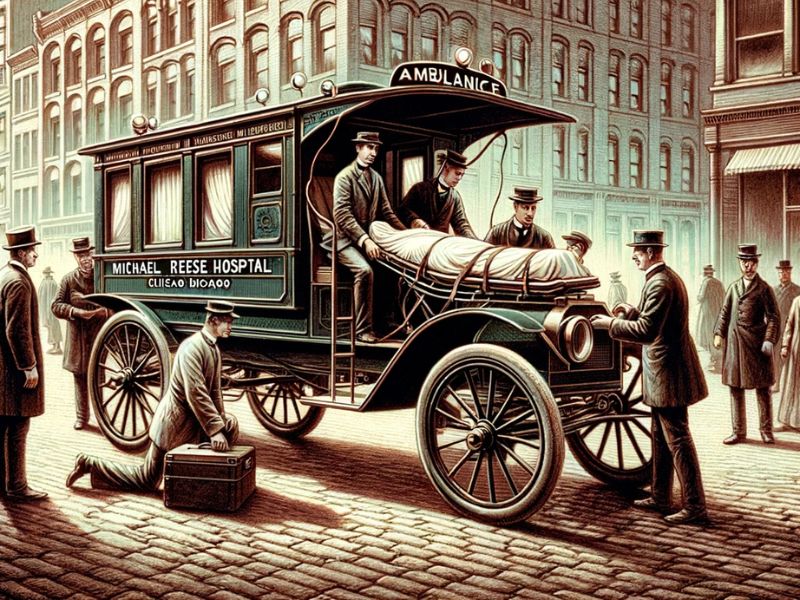
At the dawn of mobile care: birth of the motorized ambulance
From Horses to Engines: The Evolution of Emergency Medical Transport
The Origins of an Innovation
The ambulance, as we know it today, has a long and complex history dating back to the 15th century in Spain, where carts were used to transport the injured. However, the first real step towards modernization occurred in the late 19th century with the introduction of the motorized ambulance. This revolutionary change took place in Chicago, where in 1899, Michael Reese Hospital introduced the first motorized ambulance. This vehicle, powered by gas, represented a significant leap forward from the horse-drawn carts that had been used until then.
The Evolution in Emergency Transport
At the beginning of the 20th century, ambulances began to become mass-produced vehicles. In 1909, James Cunningham, Son & Company of Rochester, New York, produced the first series of motorized ambulances, marking the beginning of a new era in emergency medical transport. These vehicles were equipped with a four-cylinder, 32-horsepower engine and allowed for the transportation of more equipment and personnel, significantly improving the efficiency of the emergency service.
From World War I to the Modern Era
During World War I, motorized ambulances proved to be crucial. Organizations like the American Volunteer Motor Ambulance Corps used the Ford Model-T, which, thanks to its standardization and ease of repair, became an essential vehicle on the battlefield. The motorized ambulance helped redefine the very definition of an ambulance, transforming it from a simple means of transportation into a crucial element in saving human lives.
Progress Continues
Over the years, ambulances have continued to evolve, becoming high-tech mobile medical units. Today, the modern ambulance is equipped with advanced medical and communication technologies and is built on truck and van chassis to maximize space and efficiency. This development has been driven by the ongoing need for faster, safer, and smarter emergency response vehicles.
Sources


